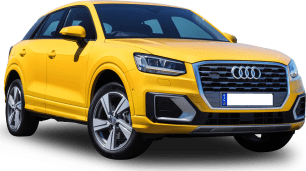Alfa says the Tonale will accelerate from 0-100km/h in 8.8 seconds, which is pretty handy. And it does feel sharp, due in no small part to the petrol engine delivering its maximum torque at 1500rpm, so you’ve got plenty of mid-range punch.
And then you’ve got the electric motor chipping in with even more pulling power if and when required.
The seven-speed dual-clutch auto is smooth in general driving although it can be reluctant and ‘shunty’ in slow-speed manoeuvres.
If you want to get more involved, slip over to manual mode and self-selected shifts are crisp and quick.
Worth noting the manual direction for the shifter is pulling back for higher ratios and pushing forward to move to a lower gear and I’m in the camp that says this is the ‘correct’ set-up.
Move to the Veloce and you’re presented with a pair of elegant alloy paddle shifters attached to the steering column (not the wheel) which further dials up the engagement factor.
The Tonale features Alfa’s three-mode ‘DNA’ drive system. ‘Dynamic’ which sharpens the steering, transmission and throttle response. ‘Natural’ is a balance between those dynamic attributes and efficiency and, as the name implies, ‘Advanced Efficiency’ is all about city traffic where you’re not worried about performance, you just want the electric motor to do as much of the work as possible.
It’s likely you’ll find yourself most of the time in Natural, but slip the DNA into D and it feels like you’re releasing the car. The throttle is so much sharper and on a sweeping B-road it’s an enjoyable mode to be in.
Suspension is by struts front and rear. And like any new model the Tonale was exhaustively tested in various locations in pre-production. But it’s worth noting, for two years it was tested in Australia, so the suspension calibration is well suited to local roads.
There are two set-ups. The Ti features ‘Frequency Selective Damping’ developed by long-time Alfa collaborator, Koni, with an extra valve coming into play if it senses high-frequency bumps are a problem and doing its best to smooth them out.
The Veloce picks up ‘Active Dual-Stage Valve Suspension’ with electronically controlled damping developed by another of Alfa’s favourite suppliers, Marelli. This time an ‘electro-actuated valve’ does a similar job but to a slightly finer degree.
In N and A mode the car rides well, although if you dial up the Veloce’s adaptive dampers you’re going to feel it. That said, in the Veloce, the combination of D mode with the suspension softened is pretty much perfect.
Handling-wise the car feels balanced and planted in corners. In fact, more like a sporty hatch than an SUV. The steering is accurate, road feel is good, and it’s responsive.
The steering ratio is quick, which means the car points into corners rapidly. But the flip-side of that is an 11.6m turning circle, which you’ll need to be aware of in the parking station.
The Tonale weighs around 1600kg and braking is well up to scratch with meaty discs all around, ventilated at the front (Ti - 330mm fr / 278mm rr - Veloce - 345mm fr / 305mm rr). And the Veloce is upgraded to Brembo calipers - four-piston fixed at the front and single piston at the rear.
But, arguably, the more interesting thing is the car features ‘braking-by-wire’, which blends the physical brakes with regenerative braking supplied by the electric motor.
Often the brake pedal in a regen braking car can feel doughy and unsure, but this one feels firm and progressive. You’d have no idea that regenerative braking is involved in the equation.
In terms of general refinement and ergonomics the grippy steering wheel is typically Alfa, with little perforated cut-outs for your thumbs, the screens are clear as crystal and the software in the multimedia display is intuitive and easy to progress through while the mix of physical and digital controls is sensible.
The front sports seats remain comfortable and supportive, even after lengthy stints behind the wheel and it’s worth pointing out the hybrid functionality allows silent start (always a neighbour-friendly feature) and up to around 15km/h, with a delicate throttle, you’ll remain in EV-only mode.
That said, the hybrid system also supports the stop-start and it can be a bit gruff and fractious, letting you know when its turning the engine back on. But it’s far from a deal-breaker.






